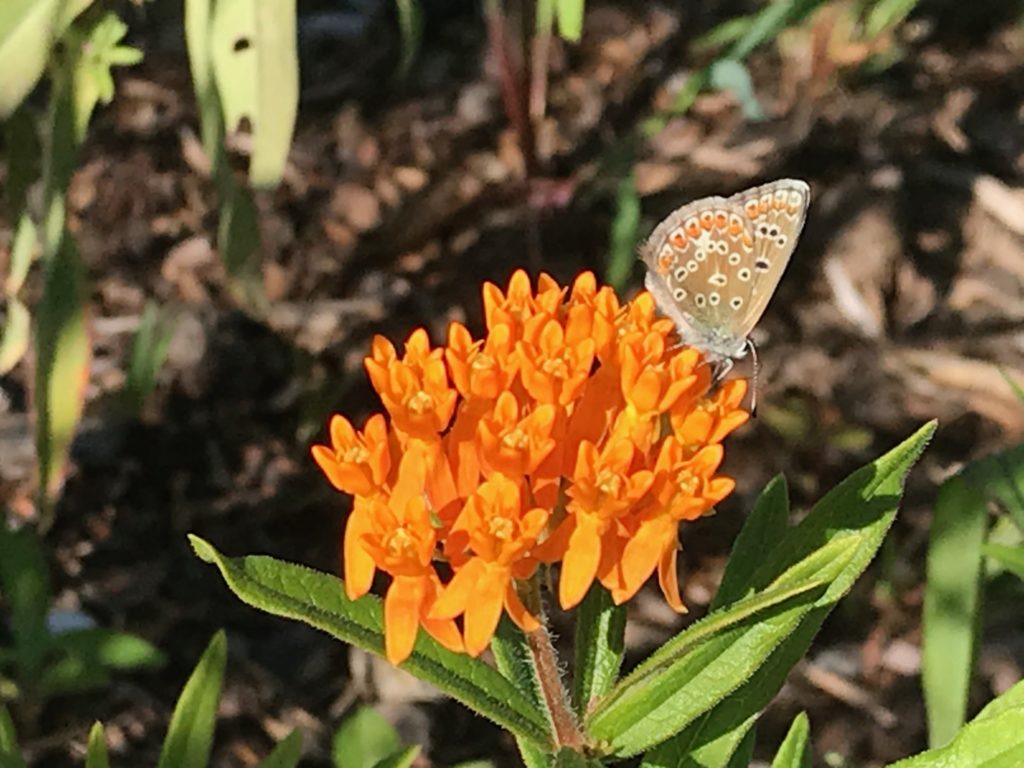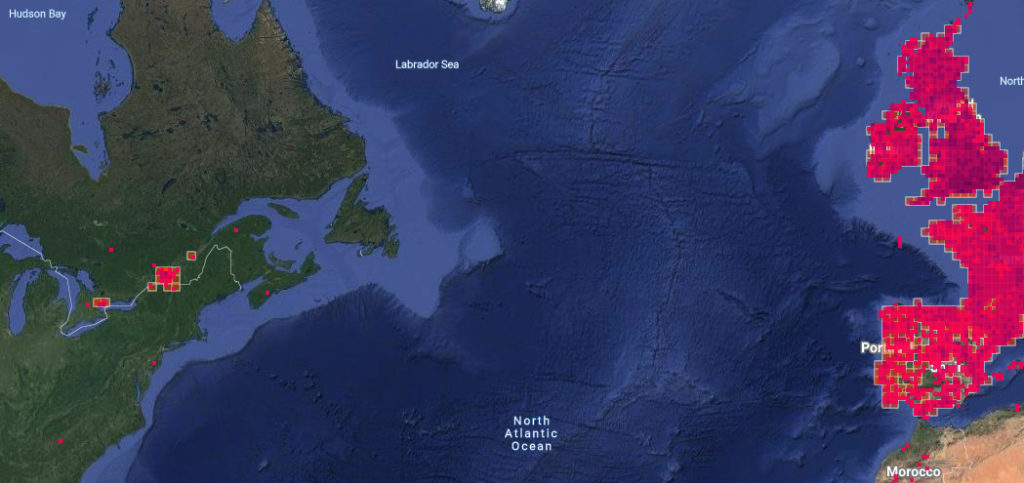New Butterfly Species Found in Vermont

The first known record of a European Common Blue (Polyommatus icarus) in Vermont at Alburg Dunes State Park on 5 September 2020 by David Barrington. Click on the image to view the record at eButterfly.
Fifteen years after it was first discover near Montreal, Canada, the European Common Blue (Polyommatus icarus) has been found in Vermont. On September 5, 2020 David Barrington captured an image of the species at Alburg Dunes State Park while botanizing with Catherine Paris and Liz Thompson. Just 10 days later, Laurie DiCesare reported another sighting to the Vermont Atlas of Life on iNaturalist in Saint Albans while on a field trip with students from the high school.
In 2005 Ara Sarafian, an amateur entomologist, found a new butterfly near the airport in Mirabel, Quebec, Canada. He contacted the Canadian National Collection of Insects in Ottawa where the butterfly was identified as a European Common Blue, a newly introduced butterfly to Canada. The species seemed well established and was recorded over the years expanding its new North American Range into Ontario and beyond. Many expected it to soon show in the United States too. Butterfly watchers were on the lookout here in Vermont.
“Just before the students arrived, I had netted a small blue butterfly, so [I] photographed that first,” said DiCesare. “Just before it flew to freedom, a student standing next to me noticed that the underwings had a distinctly different pattern, so suggested I photograph that too. As promised, I posted our finds, including my little blue butterfly, on iNaturalist.”
On September 22 Maya Belanger, one of the students, found another individual and posted it too. DiCesare visited the site again on September 25 and photographed three more individuals. There was clearly a population in the area.
The European Common Blue is one of the most common and widespread butterflies in Britain, Ireland, and probably most of Europe, and its range also extends across North Africa, the Canary Islands, and east through the Palearctic to northern China. It was thought to have been accidentally introduced to Quebec perhaps via an air shipment given the proximity of the first sightings to the international airport.
The European Common Blue uses several plants in the family Fabaceae as larval host plants, many which could also potentially function as nectar sources. Females prefer to lay eggs on plants with flowers, often laying them near the flowers. Many of the plants they are known to feed on are found here in Vermont – vetches (Vicia), vetchling (Lathyrus), trefoils (Lotus), white clover (Trifolium repens), and others.
It was thought that this Vermont sighting was not only Vermont’s first sighting, but also for the United States. However, there are several older records from Harvard Museum of Comparative Zoology and the Yale Peabody Museum of unknown origin south of our region.
The Vermont Butterfly Checklist is now comprised of 111 species in 5 families (Hesperiidae 37, Lycaenidae 23, Nymphalidae 38, Papilionidae 6, Pieridae 7).
Butterfly watchers are encourage to watch carefully for this species and report all of your sightings to our butterfly checklisting database at eButterfly.org to help us track the spread of this introduced species and determine if it competes with any native species.







